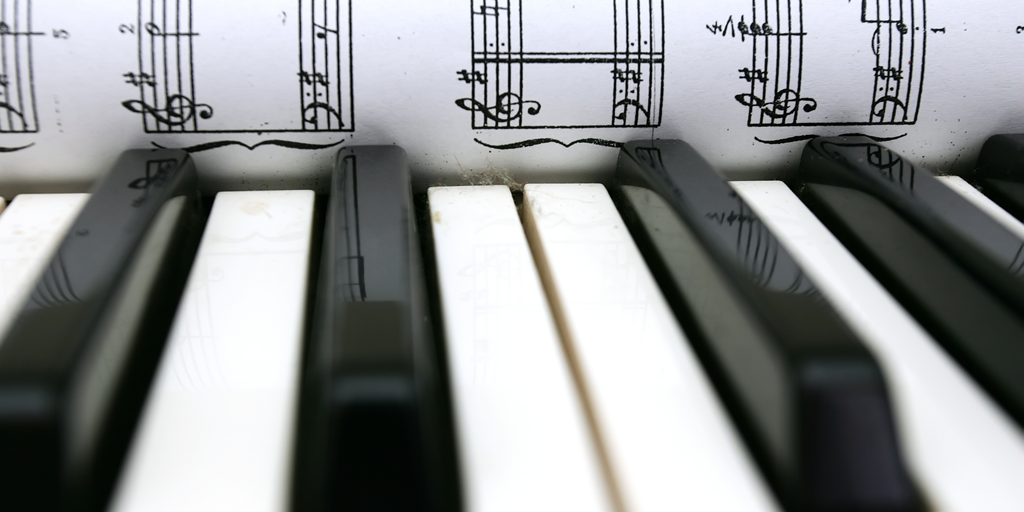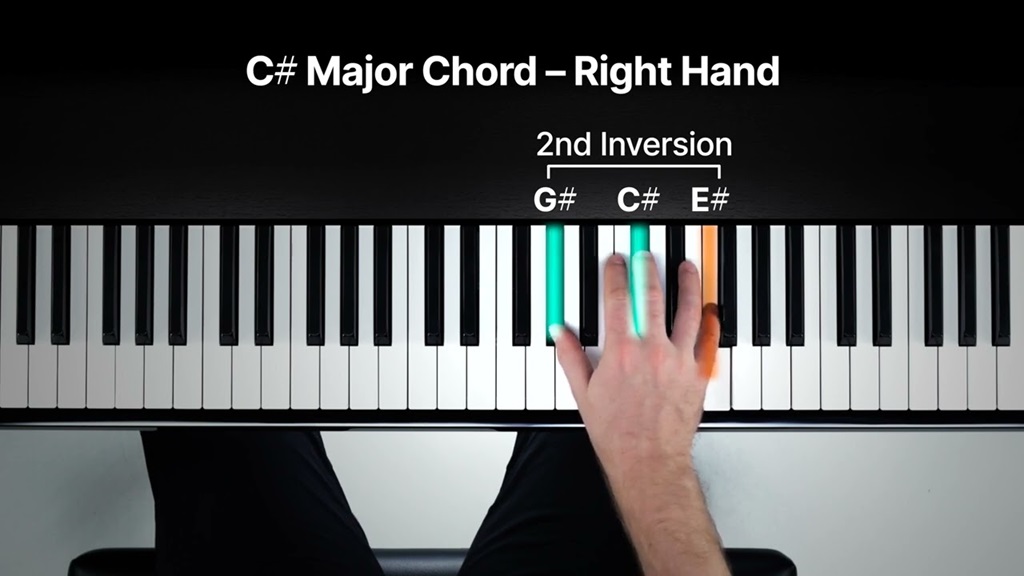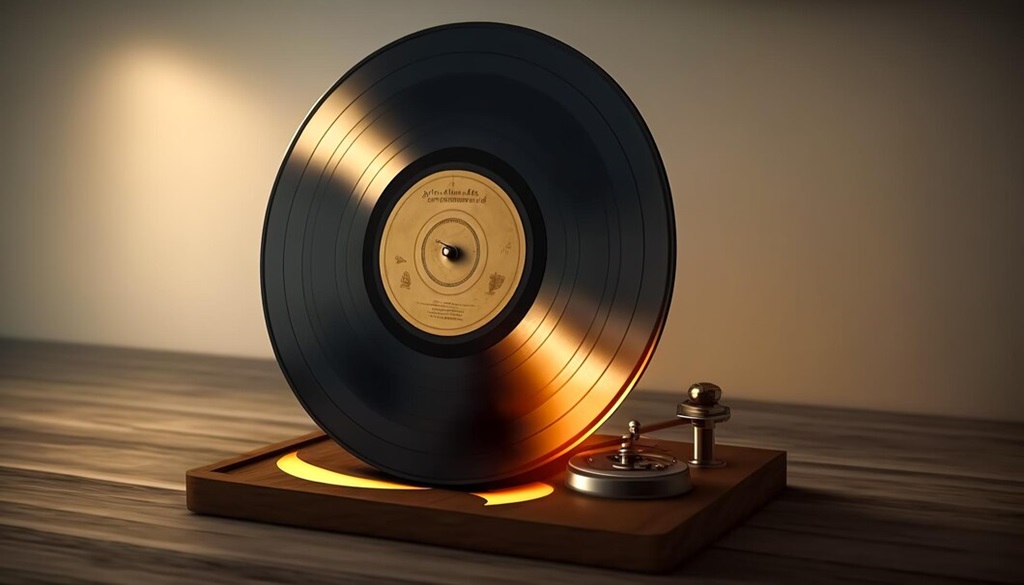
Playing chords is an essential part of learning to play the piano. Chords allow you to play multiple notes together, creating richer and more interesting sounds. The key of chord piano C# major is one of the most common keys for music, so learning chords in this key is a great place to start. In this article, I’ll walk you through everything you need to know to get started playing chords on the piano in C# major.
Getting Started with Chord Piano C#
Before we dive into the specific chord piano C# major, let’s review some chord basics.
A chord is simply three or more notes played together. On the piano, chords are built by stacking notes on top of each other using the white and black keys. The lowest note of a chord is called the root note. Chords are named after their root note and chord quality (major, minor, diminished etc).
Chords are based on scales. The C# major scale contains the notes C#, D#, E#, F#, G#, A# and B#. By taking every other note from this scale, you can build a C# major triad chord:
C# (root note)
E# (3rd note of scale) G# (5th note of scale)
These three notes together form a C# major chord. Let’s try playing a C# major chord now on the piano:
- Locate the root note C# on the keyboard. This is the black key immediately to the right of the group of two black keys.
- Build the chord by playing the root note C#, then the note four half-steps up, which is E#, then the note three half-steps up from there, which is G#.
- Play these three notes together by pressing them simultaneously. You should hear a bright, happy C# major chord.
Get comfortable finding and playing the C# major triad chord before moving on. Playing chords takes coordination, so start slow and be patient as you learn.
Triads in C# Major

Now that you know how to build a chord, let’s look at all the triad chords that exist in the key of C# major.
The C# major scale contains seven notes, which means seven possible chords can be built from those notes. These chords are:
I – C# major (C# – E# – G#) ii – D# minor (D# – F# – A#) iii – E# minor (E# – G# – B#) IV – F# major (F# – A# – C#) V – G# major (G# – B# – D#)
vi – A# minor (A# – C# – E#) vii° – B# diminished (B# – D# – F#)
Uppercase roman numerals indicate major chords while lowercase roman numerals indicate minor chords. The diminished symbol (°) means the fifth of the chord is lowered by a half step.
Let’s go through each of these chords one at a time on the piano:
I – C# major: Root note C#, 3rd note E#, 5th note G#
ii – D# minor: Root note D#, 3rd note F#, 5th note A#
iii – E# minor: Root note E#, 3rd note G#, 5th note B#
IV – F# major: Root note F#, 3rd note A#, 5th note C#
V – G# major: Root note G#, 3rd note B#, 5th note D#
vi – A# minor: Root note A#, 3rd note C#, 5th note E#
vii° – B# diminished: Root note B#, 3rd note D#, 5th note F#
Get comfortable finding and playing each chord before moving on. Say the chord names out loud as you play them and listen closely to the different qualities of the major, minor and diminished chords.
Inversions
Now that you can play C# major triads in root position, let’s look at chord inversions. An inversion simply means taking the root note of a chord and moving it to a different octave. This creates a new voicing for the chord.
There are two main chord inversions on piano:
First Inversion – Root note moved up one octave, 3rd on bottom
Second Inversion – Root note moved up two octaves, 5th on bottom
Let’s see how this looks for a C# major chord:
Root Position: C# – E# – G#
First Inversion: E# – G# – C#
Second Inversion: G# – C# – E#
Even though the order of notes is changed, it is still a C# major triad chord. Inversions add variety and color to chord progressions. Try playing piano cord C# major triad in all three inversions to hear the difference.
Now try inverting other chords from the key of C# major as well. Start with the tonic I chord, since you’ll use it the most. Get comfortable playing the C# major triad in root position and inversions before moving on.
Building Chord Progressions
Chords on their own sound nice, but music comes alive when you string chords together into chord progressions. A chord progression is simply a series of chords played in succession.
Certain chords naturally sound good together in predictable patterns. In the key of C# major, here are some common chord progressions to practice:
I – V – vi – IV
I – IV – viio – iii – vi – ii – V
vi – IV – I – V
I – vi – ii – V
As you play through these progressions, listen to how the chords create a sense of movement and tell a musical story. Focus on smooth transitions between chords and maintaining a steady rhythm. Also pay attention to how certain chords resolve naturally to others, like V to I.
Try coming up with your own chord progressions using chords from the C# major scale. Get creative with chord inversions and rhythms. Don’t be afraid to experiment!
Common Chord Shapes
When playing chords on piano, using common chord shapes will help you quickly build and transition between chords. Here are three of the most useful C# major chord shapes to know:
Root position C# major triad
This is the basic C# major triad shape we already learned. Be sure to memorize this shape in root position with the thumb on C#.
First inversion C# major triad
Here is C# major in first inversion, with the E# in the bass. This shape is useful for smooth bass movement between chords.
C# major with seventh
This shape adds the seventh note B# to the chord for a richer sound. The seventh is commonly added to major triad chords.
Take time to thoroughly learn these chord shapes for C# major (root position, first inversion, with seventh). Knowing them will make playing progressions much easier. Get comfortable switching between these movable shapes.
Then apply the same concept to build chord shapes for other chords in the key like F# or G#. Consistent practice of chord shapes will develop your chord playing ability.
Playing Chord Progressions in Left Hand
Most commonly in piano music, the left hand plays the chords while the right hand plays melody. To start incorporating your new chord skills, try playing chord progressions in your left hand while improvising a simple melody with your right hand.
For example, try a I – IV – V – I progression in C# major:
Left hand: C# major – F# major – G# major – C# major
Right hand: Improvise a melody using notes from C# major scale
Keep the left hand chords steady with a fixed rhythm. Experiment with different right hand melodies over the chords. This is an excellent exercise to coordinate your hands and get used to thinking in terms of harmony and melody.
Don’t forget to also use chord inversions to create more interesting progressions. You can also expand beyond triads and experiment with seventh chords. Just take it slowly step-by-step to start.
Tips for Practicing Chords

- Go slowly and be patient. Playing chords well takes time and consistent practice.
- Focus on correct fingering. Using the proper fingers for each chord will allow you to play faster down the road.
- Play with a metronome or drum beat. Keeping steady rhythm is crucial for good chord technique.
- Learn chord shapes well. Memorize common chord patterns and shapes like a C# major triad in inversions rather than reading the individual notes.
- Say chord names out loud to reinforce your understanding.
- Learn chord progressions in keys counterclockwise on the circle of fifths for consistency.
- Apply chords to real songs to see how they work in context.
By taking the time to properly learn chord piano C# and other keys, you’ll gain a musical skill that opens up countless possibilities on the piano. From pop songs to jazz standards, chords are the foundation of most piano music. Mastering chords takes patience and practice, but it’s one of the most rewarding skills any pianist can develop. Have fun exploring chords and let your musical creativity flourish!
Conclusion
Learning chords is hugely rewarding but does take dedication and consistent practice. Be patient with yourself as you build this key skill – it will serve you well for years to come! Focus on learning triad chord shapes well, in root position and inversions. Say chord names out loud and use common progressions to reinforce your knowledge. Applying chords to real songs keeps things fun and engaging. Don’t forget to also practice chord progressions in your left hand while improvising melodies with your right. Mastering chord piano C# major and other keys opens up many musical doors. With consistent practice over time, playing beautiful chords will become second nature. Enjoy the journey!
Frequently Asked Questions
What are the notes in a C# major triad chord?
A C# major triad contains the notes C# (the root note), E# (the 3rd), and G# (the 5th). These three notes together make up a C# major chord.
What’s the difference between a major and minor chord?
The main difference is the 3rd note in the chord. A major chord has a major 3rd interval from the root (4 half steps up). A minor chord has a minor 3rd interval (3 half steps up) which gives it a more somber sound compared to the happy sound of major chords.
How many triad chords are in the key of C# major?
There are seven triad chords that naturally occur in the key of C# major: C# major, D# minor, E# minor, F# major, G# major, A# minor, and B# diminished.
What’s the purpose of learning chord inversions?
Inversions allow you to voice the same chord in different ways by moving the root note to a different octave. This adds variety to chord progressions and allows for smooth voice leading between chords.
What time signature is best for practicing chord progressions?
4/4 time is most common since it has a steady beat. 3/4 and 2/4 time are also great for chord progressions. Focus on maintaining a steady rhythm no matter what time signature you use.


 Most Popular Songs With Baby in the Title
Most Popular Songs With Baby in the Title  The Songs Everyone Knows but Not the Name
The Songs Everyone Knows but Not the Name  Get Up and Dance! Songs Like Cupid Shuffle to Keep the Party Going
Get Up and Dance! Songs Like Cupid Shuffle to Keep the Party Going  How to Memorize Violin Note Chart Quickly?
How to Memorize Violin Note Chart Quickly? 


